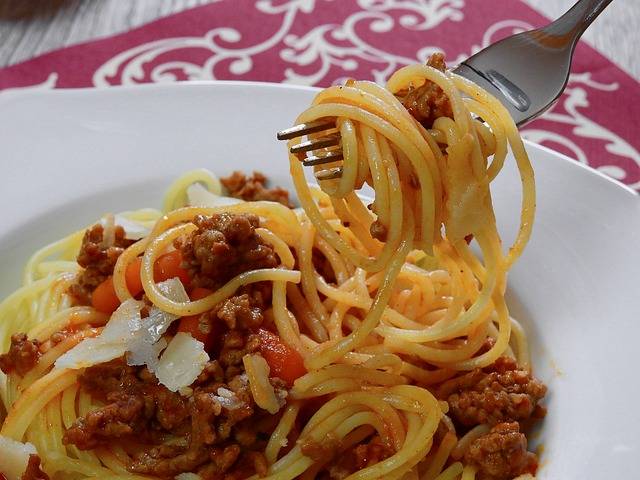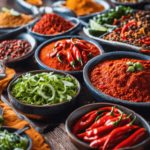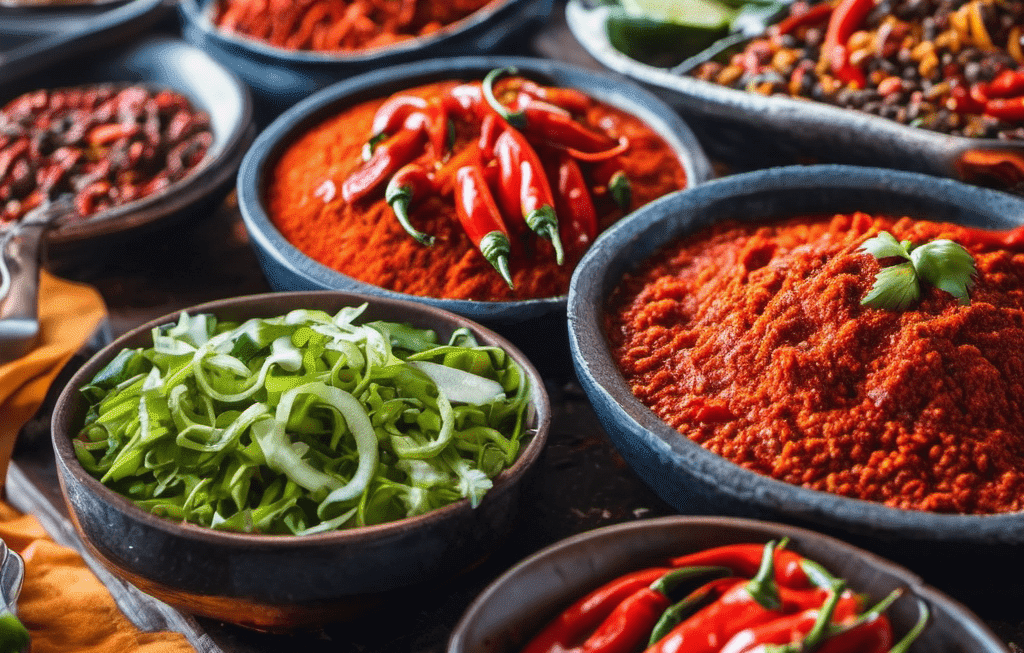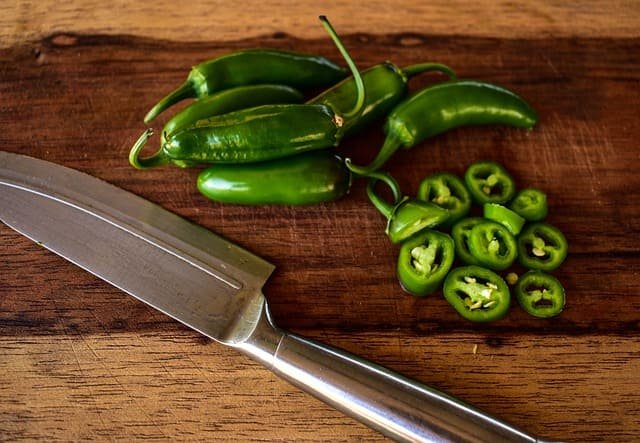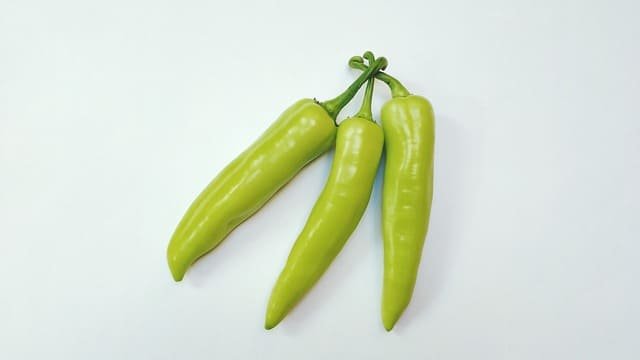Here’s the list of some best foods in the world:
Italian pizza:
Italian pizza, tracing its roots back to the vibrant city of Naples, has a rich history that parallels the evolution of Italian culinary artistry. Dating back to the 18th century, pizza emerged as a humble street food for the working class. Initially, pizza was a simple and affordable food for the working class, consisting of flatbread topped with tomatoes—a fruit recently introduced from the New World—along with other accessible ingredients like garlic and cheese. However, the turning point in pizza’s history occurred in 1889 when pizzaiolo Raffaele Esposito crafted a special pizza in honor of Queen Margherita of Savoy. This pizza, featuring tomatoes, fresh mozzarella, basil, and a drizzle of olive oil, became known as the Margherita and symbolized the colors of the Italian flag. Not only did it gain the queen’s approval, but it also elevated pizza from humble street fare to a culinary delight fit for royalty. As pizzerias proliferated in Naples, the art of pizza-making spread beyond Italy’s borders. Italian immigrants brought their pizza traditions to new lands, leading to the establishment of pizzerias worldwide. The global popularity of Italian pizza is a testament to its adaptability and universal appeal. Today, the classic Margherita remains a staple, but creative variations with diverse toppings have emerged, reflecting the dynamic evolution of this iconic dish. The traditional wood-fired brick ovens, still used in many pizzerias, not only contribute to the unique texture of the crust but also serve as a connection to the historical roots of Italian pizza. In essence, the history of Italian pizza is a narrative that intertwines cultural heritage, culinary innovation, and the enduring legacy of a dish that has transcended its humble beginnings to become a symbol of global gastronomy.
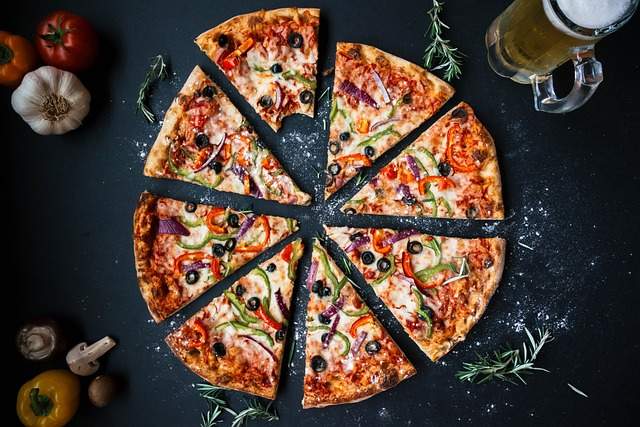
Japanese Sushi:
Sushi, an integral part of Japanese culinary heritage, boasts a rich history that spans centuries. Its origins can be traced back to the 8th century, when fermented rice was used to preserve fish in Southeast Asia. Over time, this preservation method made its way to Japan, where it evolved into a unique culinary practice. During the Edo period (17th-19th centuries), the modern concept of sushi began to take shape as street food. Edo-style sushi featured seasoned rice combined with vinegared rice vinegar, forming the basis for contemporary sushi. The invention of Nigiri sushi is often attributed to Hanaya Yohei in the early 19th century, who combined fresh fish with hand-pressed rice, creating a more portable and accessible version of sushi. Fast forward to the 20th century, and sushi underwent a transformative journey from local delicacy to international phenomenon.
Traditional sushi encompasses various forms, each showcasing the artistry of the Itamae, or sushi chef. Nigiri consists of small rice mounds crowned with raw or cooked fish, while Sashimi, though technically not sushi, features expertly sliced raw fish or seafood served without rice. Maki involves rice, fish, and vegetables rolled in seaweed and sliced into bite-sized pieces, with variations like Futomaki and Hosomaki. Temaki, or hand-rolled sushi, takes the form of a cone-shaped wrap filled with an array of ingredients. The emphasis on high-quality, fresh ingredients such as tuna, salmon, and seasonal vegetables is paramount in sushi preparation.
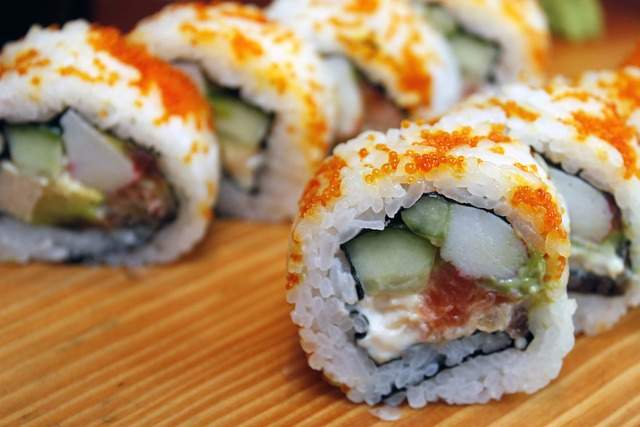
Sushi’s global popularity has led to creative interpretations and fusion styles, with sushi bars worldwide offering diverse options to cater to different tastes. The cultural significance of sushi extends beyond its culinary appeal, embodying Japanese aesthetics, seasonality, and precision. Sushi restaurants often provide an immersive experience, with chefs interacting with patrons at sushi counters and explaining the origin and preparation of each piece.
In essence, sushi is not just a dish; it’s a cultural journey that reflects centuries of tradition, craftsmanship, and a dynamic culinary evolution. From its humble beginnings in Edo-era Japan to its status as a global culinary icon, sushi continues to captivate palates and serve as a bridge between culinary traditions and contemporary gastronomy.
Curry:
Curry, a culinary phenomenon with a global footprint, traces its origins back to the Indian subcontinent, where it has evolved into a vast and diverse culinary landscape. The term “curry” is derived from the Tamil word “kari,” which means sauce. Historically, the use of complex spice blends, including cumin, coriander, turmeric, and cardamom, became emblematic of Indian cuisine, creating the flavorful base for a wide range of dishes. The history of curry is intertwined with trade routes, colonization, and cultural exchange, with influences reaching Southeast Asia, Africa, and the Caribbean. In India, regional variations abound, from the robust and spicy curries of the South to the milder, creamier curries of the North. British colonialism played a pivotal role in popularizing curry in the Western world, leading to the creation of dishes like Chicken Tikka Masala in the UK. Beyond Indian borders, curry took on distinct forms, such as the coconut milk-based curries of Thai cuisine, the rich and aromatic Japanese curries, and the vibrant renditions in Malaysian and Indonesian kitchens. The appeal of curry lies not only in its complex flavor profiles but also in its adaptability, allowing it to absorb and reinterpret local ingredients and cooking techniques wherever it travels. Today, curry stands as a testament to the interconnectedness of global cuisines, embodying a rich tapestry of history, spice, and cultural exchange.
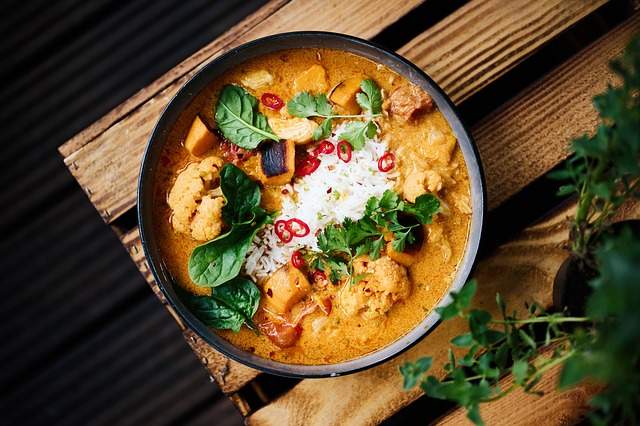
American Hamburger:
The hamburger, an iconic dish that has become a symbol of American cuisine, has a fascinating history and a profound impact on global culinary culture. Its roots are often traced back to the late 19th and early 20th centuries in the United States, with claims attributing its origin to various cities and individuals. However, it was the widespread popularity of the hamburger at the 1904 World’s Fair in St. Louis that marked a turning point, solidifying its place in American culinary history. The classic hamburger typically consists of a ground beef patty, seasoned and cooked to preference, nestled between two halves of a soft bun. Toppings vary widely, but lettuce, tomato, onion, pickles, and condiments like ketchup and mustard are staples. The addition of cheese to create the cheeseburger is another celebrated variation.
Hamburgers gained international prominence following World War II, with the proliferation of American fast-food chains globally. McDonald’s, in particular, became synonymous with the fast-food hamburger, introducing standardized preparation and service. This globalization of the hamburger has led to a myriad of adaptations and interpretations worldwide, blending with local culinary traditions and flavors. From the Japanese Teriyaki burger to the Brazilian X-Burger, the hamburger has become a canvas for cross-cultural culinary innovation.
In recent years, there has been a resurgence of interest in gourmet and artisanal burgers, elevating the humble patty to a gastronomic experience. Chefs around the world experiment with high-quality meats, unique toppings, and artisanal buns, redefining the traditional concept of a hamburger. The farm-to-table movement has also influenced the sourcing of ingredients, emphasizing sustainability and quality.

Beyond its culinary evolution, the hamburger has embedded itself in popular culture, serving as a symbol of convenience, comfort, and indulgence. Hamburger festivals, competitions, and dedicated restaurants celebrate its versatility, and enthusiasts debate the merits of various regional styles. The enduring popularity of the hamburger lies not only in its simple and satisfying combination of flavors but also in its ability to adapt to diverse tastes, making it a universal and beloved culinary icon.
Turkish döner kebab:
Turkish döner kebab, a beloved street food and culinary icon, has roots in Turkish and Middle Eastern cuisine, showcasing a flavorful combination of seasoned meat, fresh vegetables, and aromatic spices. The dish traditionally features thin slices of seasoned meat, often lamb or chicken, stacked on a vertical rotisserie. As the meat rotates, it is cooked evenly, allowing for a perfect blend of tenderness and crispiness. The origin of döner kebab can be traced back to Turkey in the mid-19th century, evolving from the traditional method of grilling meat on horizontal spits. The dish gained international popularity in the 20th century and has become a staple in various forms around the world.
To prepare a classic Turkish döner kebab, the seasoned meat is usually complemented with a variety of accompaniments. Thinly sliced tomatoes, cucumbers, and red onions often find their place alongside. The assembly is then wrapped in a flatbread called lavash or pitta, creating a portable and delicious meal. Condiments like yogurt-based sauces, tahini, or hot pepper pastes add layers of flavor.
Döner kebab has transcended its origins and diversified into various regional styles. In Turkey, you might encounter different versions such as Iskender Kebab, where the meat is served over pieces of flatbread and generously drizzled with tomato sauce and yogurt. In Germany, the Döner has become immensely popular, particularly in a sandwich format known as Döner Kebab or Döner Teller, often served with salad and a side of fries.
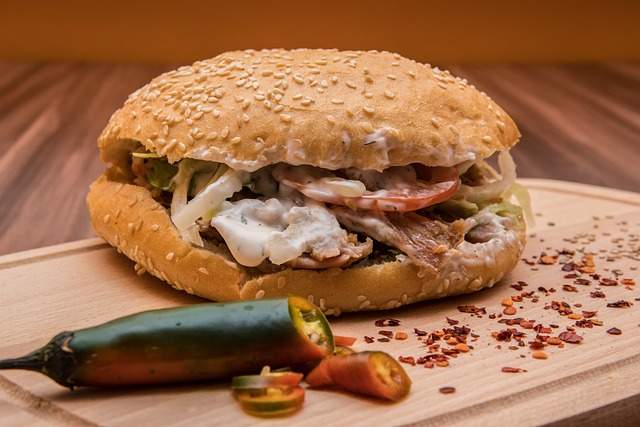
Beyond its global popularity, the Turkish döner kebab has become a symbol of cultural exchange, representing the fusion of culinary traditions in a fast-paced and flavorful street food format. Its succulent meat, fragrant spices, and diverse accompaniments continue to make it a favorite for food enthusiasts worldwide, inviting them to savor the essence of Turkish culinary excellence.
The Greek gyro:
The Greek gyro, a popular street food and a culinary delight, offers a tantalizing combination of seasoned meat, fresh vegetables, and flavorful sauces. Typically made with lamb, beef, or a combination of both, the gyro meat is seasoned with a blend of spices that often includes garlic, oregano, thyme, and rosemary. The seasoned meat is then stacked on a vertical rotisserie, where it is cooked to perfection, resulting in succulent, thinly sliced layers.
The gyro’s origins are deeply rooted in Greek and Middle Eastern culinary traditions, with its name derived from the Greek word “gyros,” meaning “turn” or “revolution” – a nod to the rotating vertical spit. The concept of cooking meat on a vertical rotisserie has ancient roots, but the modern Greek gyro, as we know it today, gained popularity in the mid-20th century.
To serve, the gyro meat is typically placed in a warm, pillowy pita bread or flatbread. The assembly is completed with a variety of accompaniments, including sliced tomatoes, red onions, and crisp lettuce. Tzatziki, a yogurt-based sauce with cucumber, garlic, and dill, is a common and flavorful addition that enhances the overall experience. Some variations might include additional toppings such as feta cheese, Kalamata olives, or even French fries within the wrap.
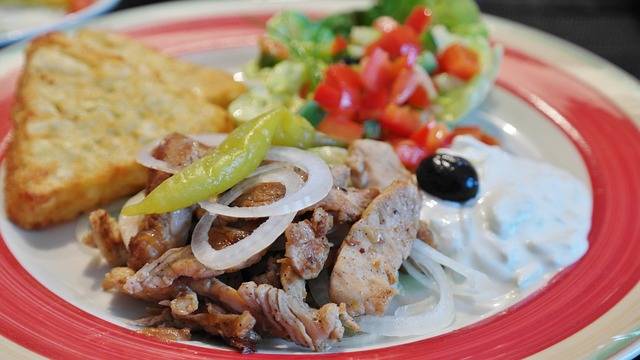
The Greek gyro has not only become a staple in Greece but has also gained international popularity, with variations served in Greek restaurants and food stalls worldwide. It’s a portable, satisfying, and savory meal that captures the essence of Greek cuisine. The gyro’s ability to balance rich and well-seasoned meat with fresh and vibrant toppings makes it a favorite among those seeking a delicious and convenient culinary experience, whether enjoyed on the streets of Athens or in the bustling cities of the world.
Chinese dim sum:
Chinese dim sum is a cherished culinary tradition deeply rooted in Southern Chinese cuisine, offering a diverse array of bite-sized delights traditionally served in small steamer baskets or on small plates. Originating along the Silk Road, dim sum has evolved into a social dining experience, symbolized by the Cantonese term meaning “to touch the heart.” From dumplings filled with shrimp or pork to steamed buns, rice noodle rolls, and an assortment of pastries, each dim sum item is meticulously crafted to balance textures and flavors. Accompanied by a rich tea culture, dim sum is enjoyed during breakfast and lunch hours, with diners sharing small plates that circulate through the restaurant on carts or trays. This communal dining style fosters a sense of community, making dim sum not just a meal but a cultural tradition that transcends borders, influencing global culinary landscapes with its intricate preparation and diverse flavors.
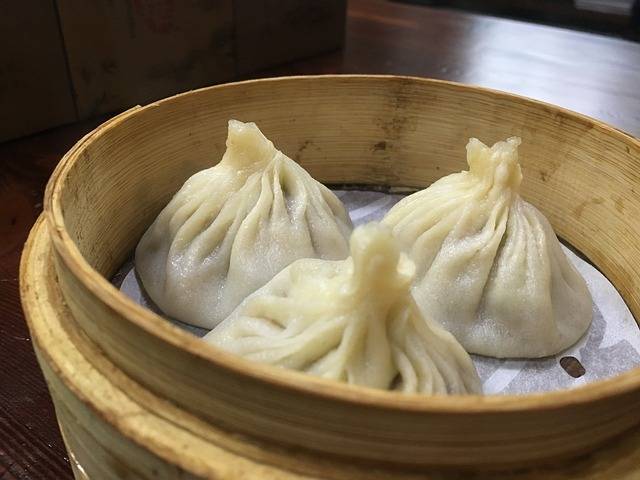
Italian spaghetti:
Italian spaghetti, an iconic pasta variety, is crafted from durum wheat semolina and water, extruded into thin, cylindrical strands, and boiled until al dente—a hallmark of Italian culinary perfection. Versatile and beloved worldwide, spaghetti pairs seamlessly with an array of sauces, from the classic Bolognese with rich meat, tomatoes, and herbs to the simplicity of aglio e olio with garlic and chili flakes. Toppings such as grated Parmesan, fresh herbs, and extra virgin olive oil enhance the flavors, while the cultural significance of spaghetti lies in its role as a communal dish, bringing people together around shared meals. Beyond the classic rendition, regional and modern variations showcase the adaptability of spaghetti, ensuring its enduring popularity as a symbol of Italian culinary artistry and the joy of shared dining experiences.
